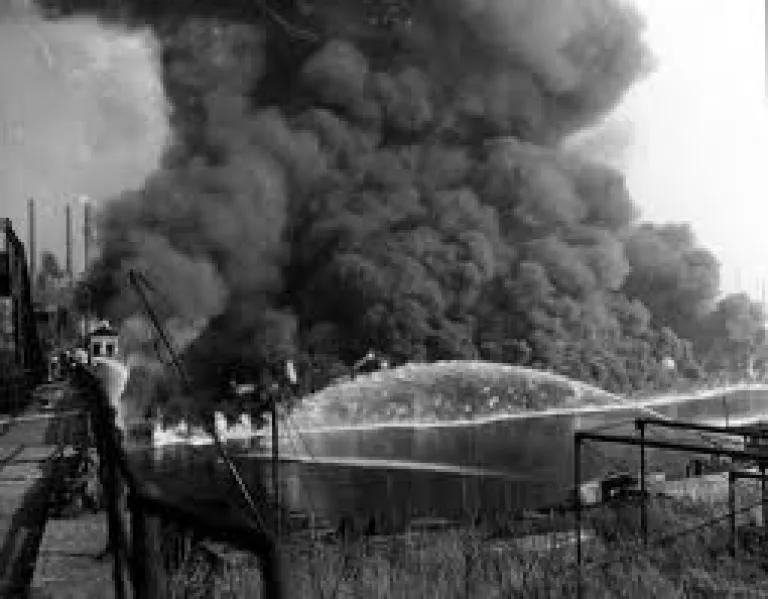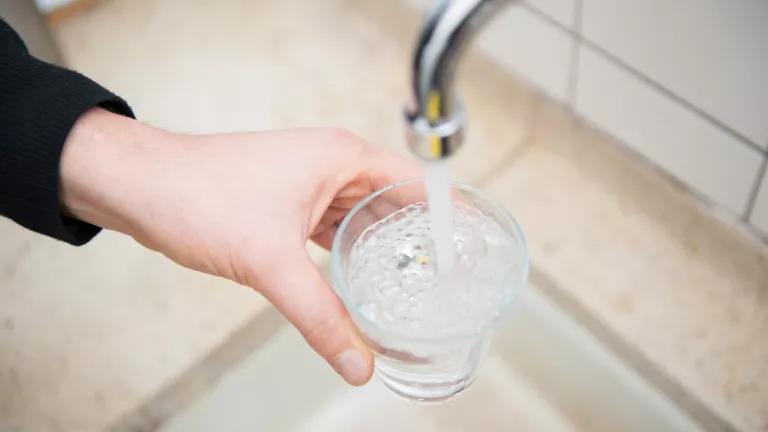
Photo courtesy of Ohio History Central
Have you enjoyed a glass of cold water (or beer) today? Like to go fishing or swimming? Do you own or work at a business that depends on reliable and clean sources of water? Did you answer yes to any of these questions? If so, join me in celebrating the 40th anniversary of the Clean Water Act and opposing efforts to undermine it.
Talk about a success story -- the Clean Water Act passed with overwhelming bipartisan support. As a result, our nation’s waters are far cleaner today than they were 40 years ago. More waters are available for fishing, swimming and as drinking water sources. The Clean Water Act also protects wetlands, which help filter pollutants and limit flooding.
And it also ensures clean water is available for your favorite craft beer. Take a look at that pint in your hand – it’s more than 90 percent water. That’s why NRDC is partnering with craft brewers to highlight the importance of clean water and the Clean Water Act. Brewers like Revolution Brewing in Chicago; Brewery Vivant in Grand Rapids, Michigan; Short's Brewing Company in Elk Rapids, Michigan; and Wild Onion Brewery in Barrington, Illinois recognize that clean water is essential to more than great-tasting beer – it’s critical for public health and the health of a wide range of industries.

The Clean Water Act provides responsible safeguards that protect the water brewers use from upstream pollution and also help them protect their downstream neighbors. Because of the Clean Water Act, it’s unlawful to discharge any pollutant from a point source into the nation’s waters without a permit. The Act charges states and EPA with implementing pollution control programs, such as setting wastewater standards for industry. It gives citizens the tools needed to understand water pollution problems in their communities and the power to challenge polluters in court.
Despite the progress made by the Clean Water Act – and the fact that Americans identify water-related issues as their number one environmental priority -- much work remains to be done. Congress will soon consider a dirty water bill that undermines the Clean Water Act by limiting the federal government’s ability to enforce clean water standards and restricting EPA’s authority to protect our waters from the most destructive waste dumping proposals. Learn more here, including how to contact your representatives.
At the same time, the drinking water sources for as many as 117 million Americans remain in a legal limbo of sorts, awaiting guidance that the Obama Administration has drafted, but not released. The guidelines clarify which water bodies are covered by the Clean Water Act, after two Supreme Court decisions (in 2001 and 2006) and guidance from the previous Administration cast uncertainty on the intent of the original legislation, imperiling protection for millions of miles of streams, millions of acres of wetlands, and other waters.
It’s hard to imagine that anyone wants to return to a time when the Cuyahoga River caught on fire. That’s why we need the attacks on the Clean Water Act to stop and our leaders to find the courage of those bipartisan visionaries who passed the Clean Water Act 40 years ago.
So, I don’t know about you, but I plan to walk over to my neighborhood craft brewery, Revolution Brewing, and enjoy a pint of “Bottom Up Wit.” I’ll toast to both the visionaries who gave us the Clean Water Act, as well as to the visionaries we need to ensure its goals are fully met, including all of us who benefit from it on a daily basis. I hope you’ll join me.



